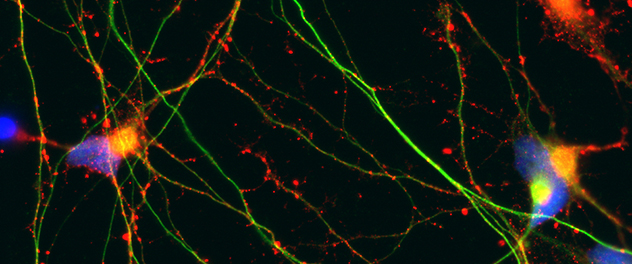
Human induced pluripotent stem cell-derived neural stem cells positive for neurofilament H (green) and growth cone associated protein-43 (red) and 4′,6-diamidino-2-phenylindole (DAPI blue).
Spinal cord injuries often result in permanent disability with tremendous life-changing impact on people and their families. Significant progress has been made in the care, rehabilitation and survival of people with spinal cord injuries. However, the complexity in the pathophysiology of spinal cord injuries underscores the necessity for continued research to better understand how the injury changes over time. Research also is needed to identify new targets for therapies that will enhance neural plasticity and promote regeneration to foster even greater improvements in functional recovery.
The Neuroregeneration and Neurorehabilitation Lab discovered that genetic blockade of the thrombin receptor protease-activated receptor 1 (PAR1) or protease-activated receptor 2 (PAR2) improves recovery of function across multiple models of spinal cord injury. Ongoing research focuses on the mechanisms that underpin these benefits and their relevance to chronic injury. In addition, the lab's team is focusing on the rationale design and implementation of pharmacological strategies that can be provided alone or in conjunction with other interventions to restore function.